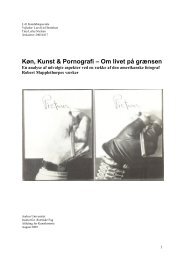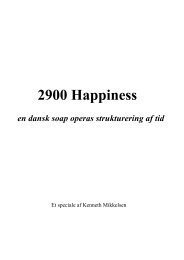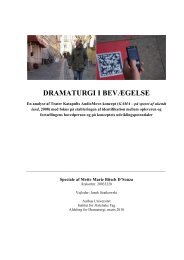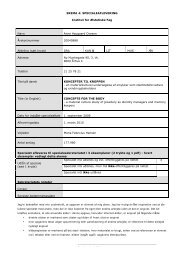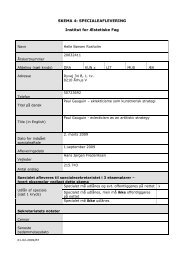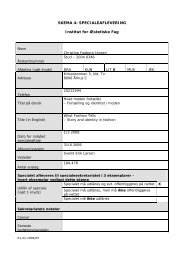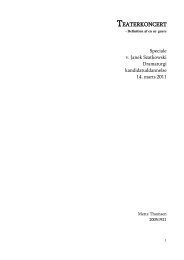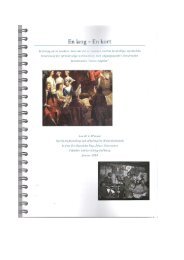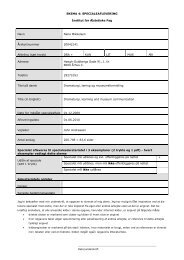Indholdsfortegnelse
Indholdsfortegnelse
Indholdsfortegnelse
You also want an ePaper? Increase the reach of your titles
YUMPU automatically turns print PDFs into web optimized ePapers that Google loves.
Summary<br />
Eduard Tubin (1905-1982) is one of the greatest composers of Estonia. In 1944 he left<br />
his homeland in fear of the Stalinist regime and lived the rest of his life in exile in Sweden.<br />
Among Tubins numerous and various compositions are the ten symphonies. He<br />
returned to this genre throughout his lifetime and the symphonies are a very important part of his<br />
work. The first four of the symphonies are composed in Estonia and the rest of them in Sweden.<br />
While growing up, Tubin had few possibilities to hear symphonic music, but he<br />
studied every score he could borrow. Later on he studied composition by Heino Eller who<br />
demanded his students to learn the classical techniques and develop their own style. Tubin also<br />
learned and listened a lot on his various trips in Europe. Through his life he was interested in old<br />
and new European music and well-informed in the newest musical ideas.<br />
Tubin was also very interested in Estonian folk music. He did so of two reasons:<br />
obviously his home culture meant a lot to him, but he also found the tunes very original.<br />
In this work I have been interested in Eduard Tubins symphonic style with focus on<br />
the thematic material, its development and the form structure. In order to be able to go to the details<br />
with those aspects, I have chosen not to focus on the harmonic element. In this work there are two<br />
large chapters which include the analyses of Tubins 2 nd and 5 th Symphony. In comparison with each<br />
other and by listening to and reading about the other symphonies, I have made my conclusions.<br />
In his symphonies Tubin mixes features from old classical compositions, Estonian<br />
folk music and newer European music, especially the avant-garde and expressionism of 1920´s and<br />
1930´s. His music is influenced by composers such as Haydn, Brahms, Rimsky-Korsakov<br />
(orchestration), Stravinsky (rhythms), Kodalý, and Bartok. Out of all these different inputs the<br />
composer manages to create his own original works with thoroughly organic development.<br />
The most important element in Tubins music is the original idea or ideas. This theme<br />
or sometimes also rhythm makes the composer to choose the ways how to develop the thematic<br />
material and the form structure of the work. Tubins symphonies are often based on one or a couple<br />
of themes and the rest of the themes have their roots in those. In the thematic development the<br />
polyphonic techniques are preferred – Tubin was very fond of contrapuntal development,<br />
imitational and fugal-technique. There is a great coherence of thematic material in his works.<br />
The form structure of Tubins symphonies has its roots grounded in the classical<br />
symphony with its four movements. But also in this case he makes his choices depending on themes<br />
93





